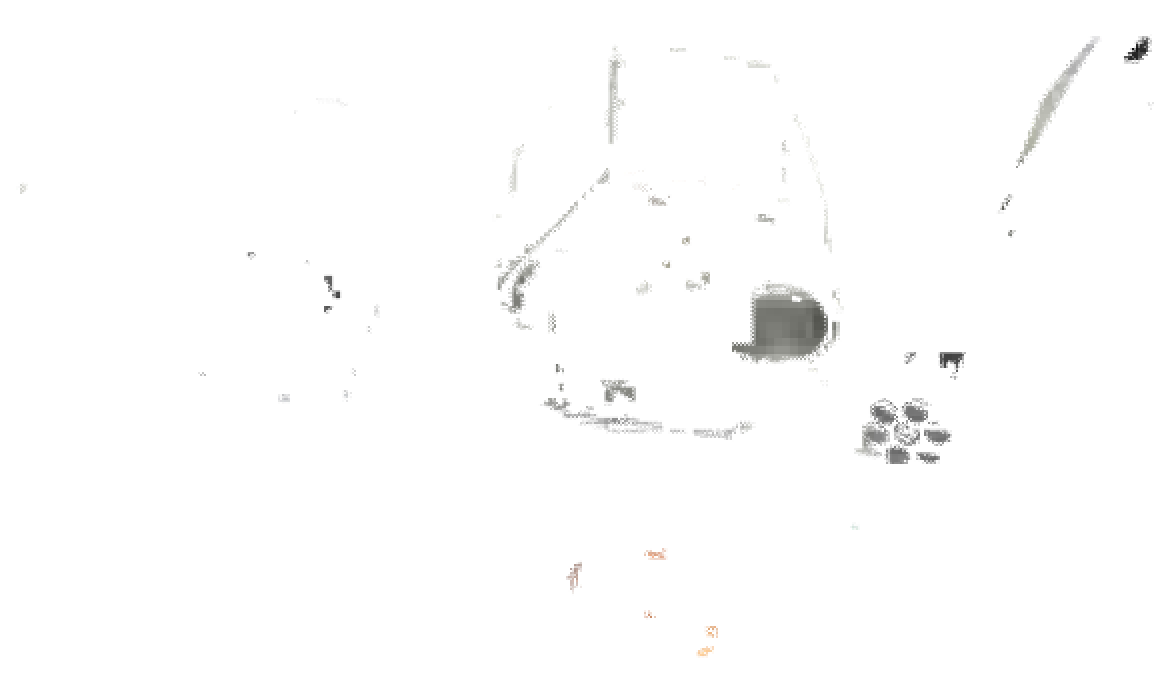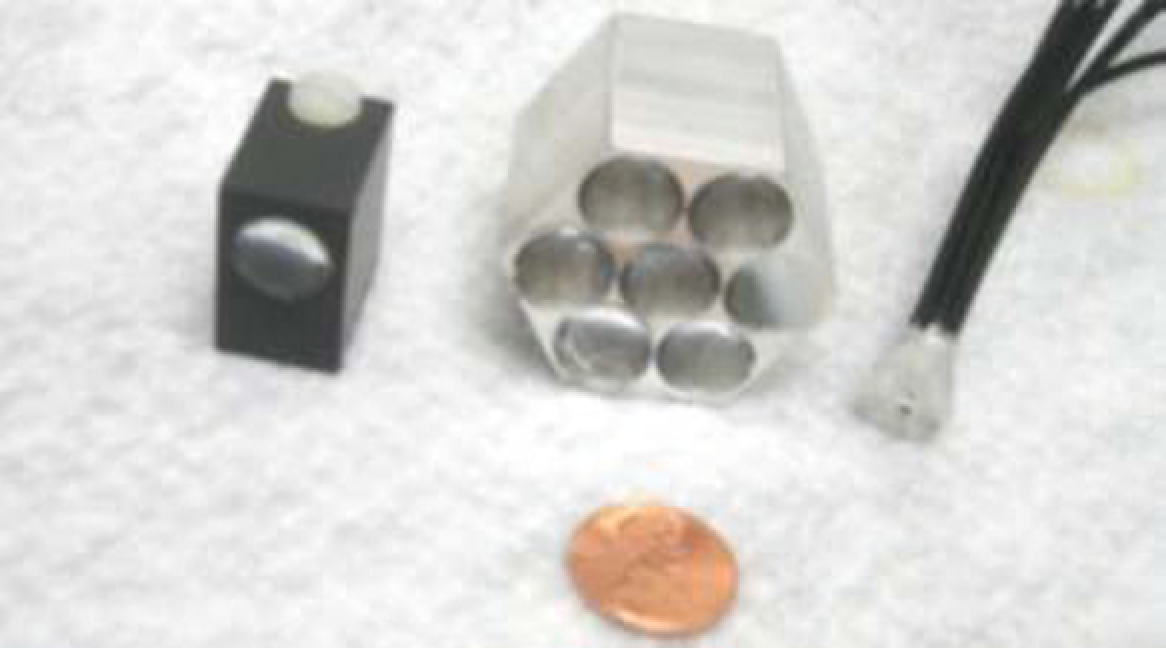Biomedical Engineering Reference
In-Depth Information
Three-ball lens/fiber
sensor
Sensor with seven cartridges
of seven photodides each
(49 total)
Seven-lenset/fiber
sensor
FIGURE 1.21
Prototypes of neural-superposition-based sensors capable of motion hyperacuity. Adapted from Ref.
40
.
1.6 C
ONCLUDING REMA
RKS
traditional imaging systems and vision sensors,
they can provide enhanced results for specific
applications. Thus, the greatest anticipated use of
nontraditional biomimetic sensors is in a hybrid
design, where both camera-eye and compound-
eye designs can complement each other.
Biomimetic vision sensors are inspired by what
we have learned about various methods of vision
that have evolved in the animal kingdom, and
they may be employed in a wide variety of appli-
cations. Common configurations of digital cam-
eras and other traditional vision sensors were
shown to be based on the mammalian camera
eye. Less-traditional biomimetic sensors have
been based on the compound-eye configurations
found in many insects, and these insect-eye sen-
sors can provide capabilities not matched by tra-
ditional vision sensors. Research is ongoing to
employ fly-eye types of biomimetic vision systems
in small unmanned aerial systems, aerial system
obstacle avoidance, and high-speed inspection in
the manufacturing and transportation industries.
Also, they have been employed in robotic applica-
tions as discussed in Chapters 5 and 9. Although
they are not, in general, intended to supplant
References
[1] M.F. Land and D. Nilsson,
Animal eyes
, Oxford Univer-
sity Press, New York, NY, USA (2002).
[2] D. Marr,
Vision
, W.H. Freeman, New York, NY, USA
(1982).
[3] R. Szema and L.P. Lee, Biologically inspired optical
systems, in
Biomimetics: biologically inspired technologies
,
(Y. Bar-Cohen, ed.), CRC Press, Boca Raton, FL (2006),
291-308.
[4] Y. Bar-Cohen (ed.),
Biomimetics: biologically inspired tech-
nologies
, CRC Press, Boca Raton, FL, USA (2006).
[5] Y. Bar-Cohen and C. Breazeal,
Biologically inspired
intelligent robots
, SPIE Press, Bellingham, WA, USA
(2003).


